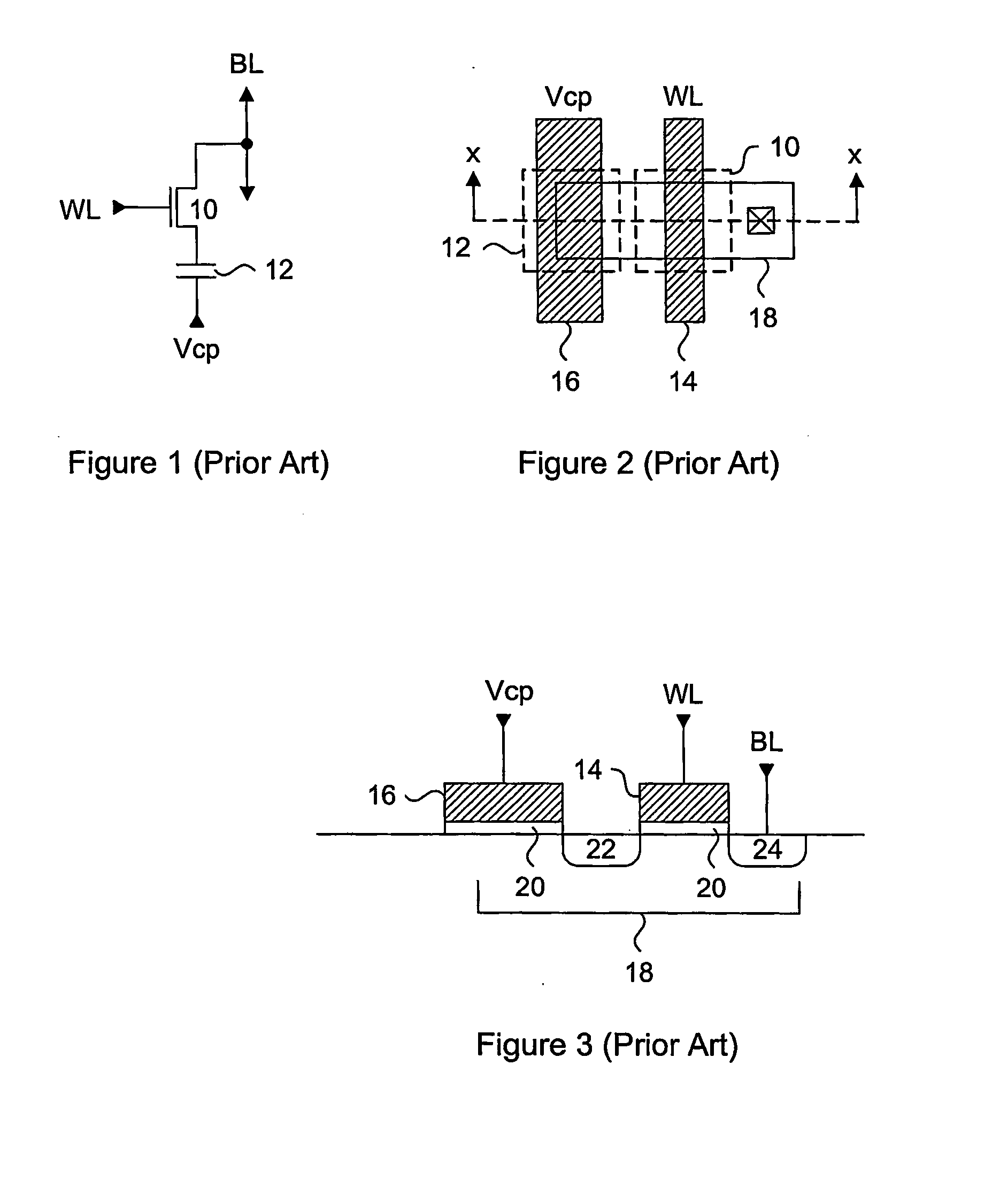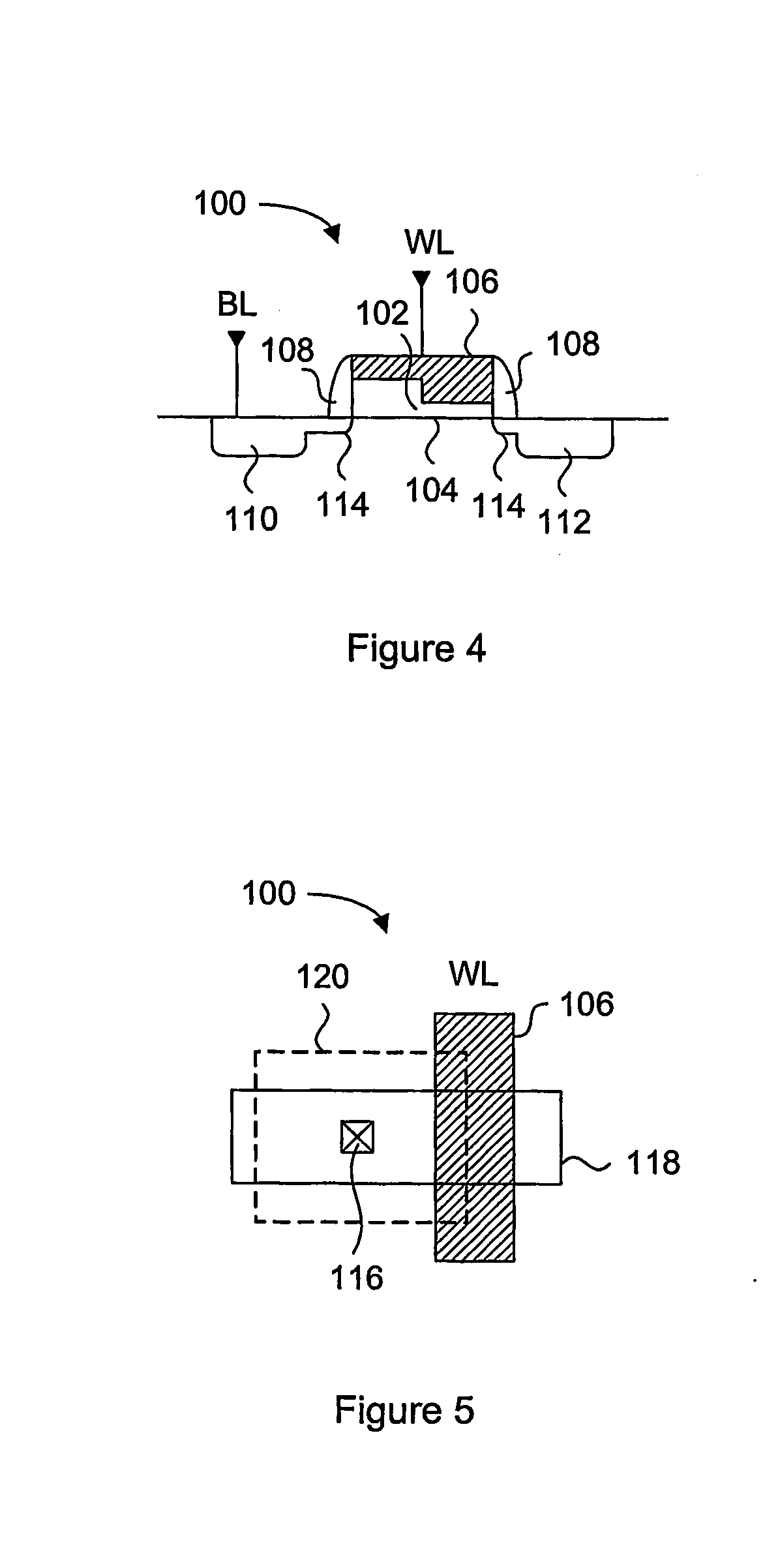Split-channel antifuse array architecture
a technology of anti-fuse arrays and transistors, which is applied in the direction of digital storage, semiconductor/solid-state device details, instruments, etc., can solve the problems of many limits on the array size, few kilo ohms leakage between the source and the drain, and the possibility of anti-fuse self-healing under current stress, etc., to achieve simple and reliable, reduce the over-voltage exposure of switching elements, and reduce the effect of over-vol
- Summary
- Abstract
- Description
- Claims
- Application Information
AI Technical Summary
Benefits of technology
Problems solved by technology
Method used
Image
Examples
Embodiment Construction
[0058] Generally, the present invention provides a variable thickness gate oxide anti-fuse transistor device that can be employed in a non-volatile, one-time-programmable (OTP) memory array application. The anti-fuse transistor can be fabricated with standard CMOS technology, and is configured as a standard transistor element having a source diffusion, gate oxide, polysilicon gate and optional drain diffusion. The variable gate oxide underneath the polysilicon gate consists of a thick gate oxide region and a thin gate oxide region, where the thin gate oxide region acts as a localized breakdown voltage zone. A conductive channel between the polysilicon gate and the channel region can be formed in the localized breakdown voltage zone during a programming operation. In a memory array application, a wordline read current applied to the polysilicon gate can be sensed through a bitline connected to the source diffusion, via the channel of the anti-fuse transistor. More specifically, the p...
PUM
 Login to View More
Login to View More Abstract
Description
Claims
Application Information
 Login to View More
Login to View More - R&D
- Intellectual Property
- Life Sciences
- Materials
- Tech Scout
- Unparalleled Data Quality
- Higher Quality Content
- 60% Fewer Hallucinations
Browse by: Latest US Patents, China's latest patents, Technical Efficacy Thesaurus, Application Domain, Technology Topic, Popular Technical Reports.
© 2025 PatSnap. All rights reserved.Legal|Privacy policy|Modern Slavery Act Transparency Statement|Sitemap|About US| Contact US: help@patsnap.com



